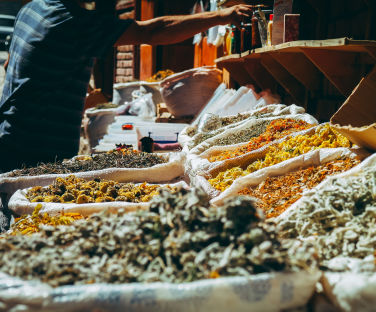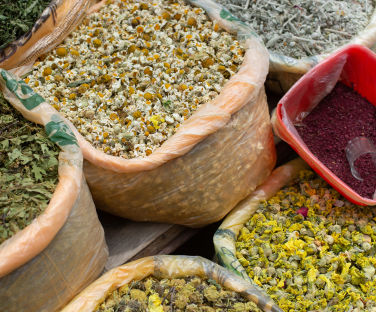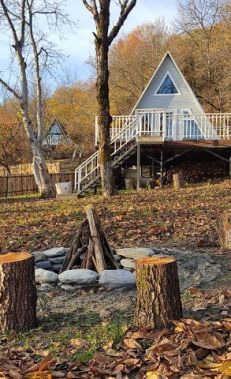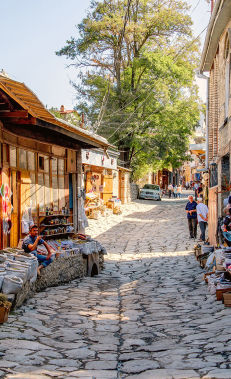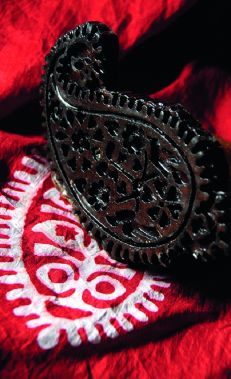medicinal herbsunique cuisine
In fact, you can begin your exploration of Lahij cuisine before actually reaching the village – by tasting qutabs (stuffed pancakes) and flatbreads prepared on a saj (large round metal plate) along the scenic Lahij road. In particular a local type of qutab called “pal’ made from a locally grown herb in early spring will delight your taste buds. You can also enjoy dining in nature at the roadside recreation areas.
Also, be sure to buy some of the many herbs and spices sold in shops both on the way to Lahij and in the village itself. Herbs such as bay thyme and mountain leaf, most of which grow only in these areas, are brewed and drunk, as well as added to local dishes for extra flavour. Look out especially for lemon thyme, which when brewed gives the pleasant aroma and taste of both lemon and thyme simultaneously.
To shake off your road fatigue, head to the Ancient Tea House located on the main street of the village for a glass of tea infused with these herbs accompanied by rose petal jam. Another dish that decorates the tea table in Lahij is “black halva” or “semeni halva”, a dessert made with spices such as anise, cinnamon, cardamom, pepper and jasmine. Making this halva, which is shaped like a diamond and topped with walnut kernels, takes 4-5 hours.
When talking about Lahij cuisine, mention must be made of dolma (stuffed vegetables or leaves). This traditional national dish is very popular throughout the country, but here it is prepared in its own way. Lahij dolma is oblong with local spices added to the minced meat stuffing, which is wrapped not in quince leaves rather than grape leaves, which gives the dolma a very special taste. If you stay with local residents, in homestays or guest houses, you can try this incredibly tasty dish prepared according to old recipes by the hostess.




